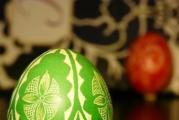Sony PRS-T1 - Specifications. Wi-Fi is a technology that provides wireless communication to transfer data over short distances between different devices.
The new Sony book, on the one hand, is similar to the old models, but, in fact, is the ancestor of a new direction. It's strange, but there are no other readers on the American website of the company (we are talking about the PRS series), only T1 in different variations. Actually, they call the Reader Wi-Fi model, apparently, they decided to make life easier for users. This is good practice. And the book itself evokes extremely positive emotions, if you do not take into account some of the roughness inherent in Sony books, first of all, this concerns formats.
Design, construction
Recently, more than a dozen books have passed through my hands, you can find reviews on the site. I said and continue to say, if you like good things, then you should choose Amazon and Sony readers, everything else can support a bunch of formats, work longer and be better than Kindle or PRS in all respects. But you will not get the feeling of a thing in your hands. This is a harsh market reality, the design of readers is mostly absent as a class, the same gray crafts. In principle, an e-book has long been a household tool, and you are unlikely to think about the appearance of a microwave - but the reader is probably in your hands more often. Accordingly, I personally would choose the best that is on the market, and in appearance as well.
The book in question comes in a very compact package, literally not a single extra millimeter. No big boxes. Everything you need is included, unfortunately, there is no AC adapter, no cover. But there is a stylus, although when working with the screen it is quite possible to do without it. The first thing you pay attention to is that the book is very small, it can easily fit in a jacket pocket. Winter is coming soon, and everyone in Russia will be wearing outerwear. When the reader is in sleep mode, the cover of the book you are reading is displayed on the screen. The body is made of glossy black plastic, the back is velvety material, it is very pleasant to hold the gadget in your hands. Under the display there is a metal insert, the case does not creak when compressed. On the bottom end there is a microUSB connector, a minijack, on the left end there is a slot for a microSD memory card, covered with a flap.
I want to praise the Sony designers, on the one hand, there are similarities with the old models. On the other hand, oddly enough, the PRS-T1 has its own face, the book is unlike anything else, it is pleasant to hold it in your hands. The thing is as it is. Not so thin, it's more of a visual effect due to beveled edges, but even the buttons here are made wisely, even the PRS-T1 somehow resembles Sony Ericsson smartphones.
Dimensions 111 x 172 x 9 mm, weight 168 grams. The screen is made flush with the body, the glossy plastic around, of course, gets dirty, but it's not very noticeable. Apparently, they decided to strengthen the area under the display with metal, since there are buttons there. In addition to the black book, there is also a red, white, white with rhinestones. There are several branded accessories on the official website, these are illuminated cases, chargers, gift cards.
Display
The diagonal of the display (Pearl is used here) is six inches, the resolution is 600 x 800 pixels, 16 shades of gray, Clear Touch Infrared Technology is supported. What is it and why is it necessary. For example, already familiar gestures for zooming in are supported, it is enough to “push” the page with your fingers. True, there is a pitfall here, in the lower right corner there is a page symbol, an increase icon, and to get rid of this, you need to press the menu button. You can also “tap” and hold your finger on a word, a link to a dictionary with a transcript will appear at the bottom of the screen, plus a search menu in “Wikipedia” or Google, add a note, highlight.
In my opinion, the screen is close to ideal. Not big and not small, contrasting, there is a wide choice of font size and type. For example, if in old books with sizes everything was military, one or two and ready, then there are already eight “divisions”. At the same time, by playing with the types of fonts, you can easily achieve the perfect display for your loved one.
Control
At the bottom there is a power button and a Reset hidden in the case. Under the screen there are buttons for scrolling, switching to the main menu, going back, calling the menu for a particular program. There are no volume buttons. The screen is very convenient to use, handwriting is supported, here you will need a stylus from the kit. You can type site addresses on the keyboard with your finger without any problems, the delays are minimal. In general, the impression is created as from working with a smartphone. Interesting experience.
But for a book, the convenience of flipping when you hold the gadget with one hand is more important. Not everything is obvious here. For example, if you hold the PRS-T1 in your right hand, it is more convenient to navigate from page to page by swiping your finger across the display. The pages turn very quickly, it is difficult to make a mistake, so everything is fine. But if you hold the book in your left hand, then it will be more convenient to use the buttons, I really liked the precise, soft move. It can be seen that they pored over the buttons and over the pressing force.
There is a miniature light indicator next to the power button, it does not hurt the eyes, and in general it is practically not noticeable.
Browser and WiFi
The book has Wi-Fi and, accordingly, there is a browser. Not only is there a browser, but this browser is quite possible to use. It quickly scales sites, loading does not require a moment of silence with a cigarette and coffee, information is displayed correctly, thanks to multitouch support, it is easy to “spread” the page to look at something more carefully. The book quickly detects access points, remembers passwords, automatically connects to a familiar network when it is in the access zone. In principle, Wi-Fi support is needed, it seems, in order to go and buy books in the proprietary Reader Store, for Russia this is not particularly relevant. But there are links to public libraries, Google Books.
Additional features
The book has a player, covers are displayed, everything is like the old Sony readers, typical functionality. I do not think that the owners will constantly listen to music. Also note-taking, a program for drawing or writing any plans to take over the world - writing is best with a stylus. Dictionary, image viewer, everything like the old books.
The menu has links to purchased periodicals and books, the covers of books and the last opened book are displayed on the desktop, at the top there are indicators of battery charge, Wi-Fi turned on, it's a pity that the time is not displayed. When reading, the indicators are not visible at all, which is strange. If you want to read the instructions for using the book, then look for the manual right among the books, it is not included in the kit.
Formats and books
I got an American sample without the Russian language, I think the craftsmen will soon take care of it. The virtual keyboard is English, and so on. ePub, PDF, TXT formats are supported, I tried uploading some ePub books downloaded from the net. As you can see, covers and titles in Russian are displayed correctly, and there are no problems with reading. The formatting, as is always the case with Sony readers , is a little odd, the content is displayed. In short, everything is fine. You can do without conversion - of course, only if you do not have a huge library in FB2. I also tried loading a PDF into memory, a large instruction manual for Casio watches. The size is small, as you can see, in the menu you can switch the view to landscape, then the instructions are much more convenient to read. Only it is difficult to read something, drawing is not to say that it is very fast, it takes time. There is no position sensor in space, which is not very good. After drawing, you can read small letters, but then suddenly you can’t return to horizontal mode. And this applies only to PDF, with ordinary books in ePub everything is in order. In my opinion, T1 is not ideal for PDF, especially if you are interested in reading and using various documentation.
Memory
About 1.3 GB of memory is available for the user, microSD cards up to 32 GB are supported. In my opinion, for most users, the built-in storage will be enough for the entire time of using the book, especially if you do not clog the memory with music.
Working hours
They promise a month of “life”, in my opinion, this is a good indicator - moreover, it is quite close to reality. The menu has an option to completely turn off the book, there is also a sleep mode when the cover is displayed on the screen.
conclusions
Book settings are simple, there is nothing special. On average, a book in Moscow costs about nine thousand rubles. In the USA about 150 dollars. While we have a typical overpayment for a new product, then prices will settle down.
The most important part of the review, summing up. I enjoyed the book very much and am impressed with the work done at Sony. One of the few devices where everything is very smooth, smooth, fast and pleasant. Let's look at the pros:
- Original design, good materials, assembly. The book fits easily into a jacket pocket, at least mine does.
- Great display, multitouch supported
- Long battery life
- For the first time I see a normal browser in a book - moreover, it is not difficult to download a book from the network and open it in the “reader”. Wonderful
- The book is “fast”, this applies to turning over, and working with the menu, and everything else - delays are imperceptible
- Everything is in order with the controls, you can scroll using the buttons, and using the capabilities of the touch screen
- Handwriting is implemented well, it is quite possible to write short notes, notes, draw up action plans
- You can read files in ePub format without conversion, Russian language is supported
There are also cons:
- Time is not displayed in the indicator line, the battery charge indicator is not visible during reading
- Reading PDF is not implemented very well
- Not all book formats are supported
- The package does not include a power adapter, a case
- Still, the plastic (both front and rear) is easily soiled, keep in mind
It is with great pleasure that I recommend this book to you and I want to say one thing, Sony was able to collect all their many years of experience in one device. Simple menu, convenient format, cool design, great paper, the PRS-T1 is a pleasure to use. This little book is likely to give you a fresh look at eReaders, especially if you've used any Inchi and other inexpensive similar devices before.
Sergey Kuzmin ()
Problem solved
Pros: Ease of reading and everything connected with it. Disadvantages: Today I updated the factory firmware. Rather, it updated itself, after which the Russian language disappeared. I don’t know what else has disappeared there, but the books are still there. Cosmic price for a native cover. One book is not enough, you have to stand in line, your wife doesn’t go to the toilet with her (sorry). Comment: Three months after the purchase, I described my impressions here (see anton112anton's comment). Therefore, I will not repeat anything. A year has passed. Appearance. Light scratches on the front glossy panel under the buttons and around the screen. Not critical. The buttons were as new as they were. Insert under the screen (as if made of aluminum) with a logo and icons - also in new condition. The back panel made of soft-touch plastic, of course, bulges and has an unsightly appearance. Cleaned with a slightly damp cloth. And like new again. Screen without any scratches. At what it is used not too carefully, but is worn in a case. Job. For all the time of almost intensive use, it hung only once. Fixed by pressing RESET. Fast, no data loss. she still reads fb2, so I apologize if I misled you last time. The battery lasted a month and still does. The main thing is to monitor the status of WI-FI - it must be turned off. Otherwise, for 5-6 days and charge again. I turn it off very rarely, mostly in anticipation. At first I inserted a memory card, then removed it. For books, his memory is more than enough. Overall impressions after a year of use remained as positive as after three months. Nothing more is needed from the book. I went shopping, clicked on other books (which you can) - after this, everything is garbage.
Information about the make, model, and alternative names of a particular device, if any.
Design
Information about the dimensions and weight of the device, presented in different units of measurement. Used materials, suggested colors, certificates.
| Width Width information refers to the horizontal side of the device in its standard orientation during use. | 110 mm (millimeters) 11 cm (centimeters) 0.36 ft (feet) 4.33 in (inches) |
| Height Height information refers to the vertical side of the device in its standard orientation during use. | 173 mm (millimeters) 17.3 cm (centimeters) 0.57 ft (feet) 6.81 in (inches) |
| Thickness Information about the thickness of the device in different units of measurement. | 8.9 mm (millimeters) 0.89 cm (centimeters) 0.03 ft (feet) 0.35 in (inches) |
| Weight Information about the weight of the device in different units of measurement. | 164 g (grams) 0.36 lbs (lbs) 5.78 oz (oz) |
| Volume Approximate volume of the device, calculated from dimensions provided by the manufacturer. Refers to devices with the shape of a rectangular parallelepiped. | 169.37 cm³ (cubic centimeters) 10.29 in³ (cubic inches) |
| Colors Information about the colors in which this device is offered for sale. | Black Red White |
SoC (System on a Chip)
System on a chip (SoC) includes all the most important hardware components of a mobile device in one chip.
| SoC (System on a Chip) A system on a chip (SoC) integrates various hardware components such as a processor, graphics processor, memory, peripherals, interfaces, etc., as well as the software necessary for their operation. | Freescale i.MX508 |
| Technological process Information about the technological process by which the chip is made. The value in nanometers measures half the distance between the elements in the processor. | 65 nm (nanometers) |
| Processor (CPU) The main function of the processor (CPU) of a mobile device is the interpretation and execution of instructions contained in software applications. | ARM Cortex-A8 |
| Processor bit depth The bit depth (bits) of a processor is determined by the size (in bits) of registers, address buses, and data buses. 64-bit processors have higher performance than 32-bit processors, which, in turn, are more productive than 16-bit processors. | 32 bit |
| Instruction Set Architecture Instructions are commands by which the software sets/controls the operation of the processor. Information about the instruction set (ISA) that the processor can execute. | ARMv7-A |
| First level cache (L1) Cache memory is used by the processor to reduce access time to more frequently accessed data and instructions. L1 (level 1) cache is small and much faster than both system memory and other cache levels. If the processor does not find the requested data in L1, it continues to look for them in the L2 cache. With some processors, this search is performed simultaneously in L1 and L2. | 32 kB + 32 kB (kilobytes) |
| Second level cache (L2) L2 (level 2) cache is slower than L1, but in return it has a larger capacity, allowing more data to be cached. It, like L1, is much faster than system memory (RAM). If the processor does not find the requested data in L2, it continues to look for it in the L3 cache (if available) or RAM. | 256 kB (kilobytes) 0.25 MB (megabytes) |
| Number of processor cores The processor core executes program instructions. There are processors with one, two or more cores. Having more cores increases performance by allowing many instructions to be executed in parallel. | 1 |
| Processor clock speed The clock speed of a processor describes its speed in terms of cycles per second. It is measured in megahertz (MHz) or gigahertz (GHz). | 800 MHz (megahertz) |
| The amount of random access memory (RAM) Random access memory (RAM) is used by the operating system and all installed applications. Data stored in RAM is lost when the device is turned off or restarted. | 512 MB (megabytes) |
Built-in memory
Each mobile device has a built-in (non-removable) memory with a fixed amount.
Memory cards
Memory cards are used in mobile devices to increase the storage capacity for storing data.
Screen
The screen of a mobile device is characterized by its technology, resolution, pixel density, diagonal length, color depth, etc.
| Type/technology One of the main characteristics of the screen is the technology by which it is made and on which the image quality of information directly depends. | E Ink Pearl |
| Diagonal For mobile devices, the screen size is expressed in terms of its diagonal length, measured in inches. | 6 in (inches) 152.4 mm (millimeters) 15.24 cm (centimeters) |
| Width Approximate Screen Width | 3.6 in (inches) 91.44 mm (millimeters) 9.14 cm (centimeters) |
| Height Approximate Screen Height | 4.8 in (inches) 121.92 mm (millimeters) 12.19 cm (centimeters) |
| Aspect Ratio The ratio of the dimensions of the long side of the screen to its short side | 1.333:1 4:3 |
| Permission Screen resolution indicates the number of pixels vertically and horizontally on the screen. Higher resolution means sharper image detail. | 600 x 800 pixels |
| Pixel Density Information about the number of pixels per centimeter or inch of the screen. Higher density allows information to be shown on the screen in clearer detail. | 167 ppi (pixels per inch) 65 ppcm (pixels per centimeter) |
| Screen area Approximate percentage of screen space on the front of the device. | 58.77% (percentage) |
| Other characteristics Information about other functions and features of the screen. | Capacitive Multitouch |
| Screen shades - 16 Clear Infrared touch screen |



